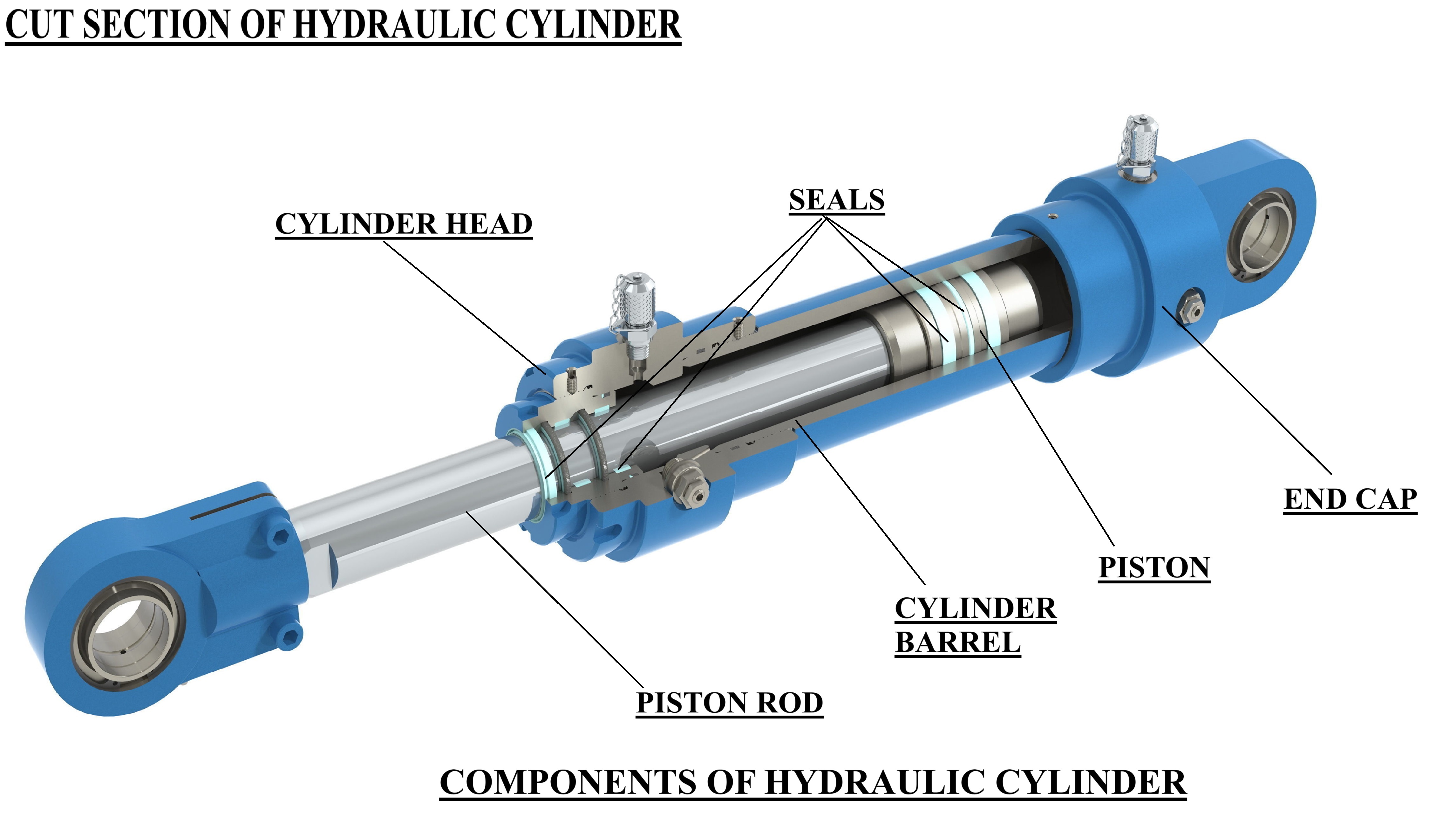Hydraulic Cylinders
- Home
- Hydraulic Cylinders
RG Fluid is one of the leading manufacturers of Hydraulic Cylinders.
Ever wondered how massive machines manage to move mountains? It’s all thanks to hydraulic
cylinders! These mechanical marvels use fluid pressure to produce the force necessary to lift, push,
and pull heavy loads. Hydraulic cylinders are unbelievably dependable mechanisms of industrial
systems.
Hydraulic cylinders operate based on Pascal's Law, which asserts that pressure applied to a fluid is
evenly distributed throughout that fluid. This principle enables a small force exerted on a smaller
area to create a much larger force over a larger area at the other end of the cylinder. The primary
purpose of a hydraulic cylinder is to transform the energy stored in hydraulic fluid into a force that
moves the piston within the cylinder, thereby driving the attached machinery.
When pressurized fluid is introduced into one side of the cylinder, it pushes the piston to
move, causing the piston rod to extend or retract, generating force and motion. This motion
is transferred to the piston rod, then to the machinery.
Hydraulic cylinders are crucial for many machines and industrial systems. They are
mechanical actuators that produce linear motion and force by using pressurized hydraulic
fluid.: Hydraulic fluid not only transfers force but also lubricates and cools the cylinder
components. Every component of a hydraulic cylinder plays a crucial role in its operation.
Here's how they function and
Types Of Hydraulic Cylinders
Single-Acting Cylinder : Only applies hydraulic pressure in one direction. These
cylinders use gravity or a spring for the return stroke. Ideal for applications where
work is done in one direction, like lifting.
Telescopic Cylinder : Contains multiple stages of nested cylinders that extend
sequentially. Perfect for applications requiring long strokes in a compact form.
Double-Acting Cylinder : Can apply hydraulic pressure in both directions, allowing for
more control and versatility
Tie-Rod Cylinder : Features steel rods, usually four or more, that hold the two end caps to
the cylinder barrel. Common in industrial machinery.
Plunger Cylinder : TSimilar to single-acting cylinders but lacks a piston and applies
force directly through a plunger. Ideal for jacks and lifts.
Smart hydraulic cylinders : Equipped with internal and external electronic sensors
and controls, these technologically advanced "smart" cylinders can provide real-time
piston position data, greatly enhancing precision, control and efficiency in complex
automated systems.
Mill Type Cylinder : Designed for heavy-duty applications, these have thicker walls
and flanges for added strength.
External guides : Provide additional support to the load, further minimizing the
forces directly applied to the cylinder
| Bore Dia | 40 MM to 500 MM (Option up to 800 MM) |
| Stroke | 12000 MM (option upto 20000 MM) |
| Pressure | 50 to 700 bar (option up to 1000 bar) |
| Temperature | -10º C to 80º C (option up to 150º C with FKM) |
| Mounting Styles | Tie rod, Rear flange mounting, Front flange mounting, Rear clevis mounting, Rear eye mounting, Rear male front clevis, front eye with spherical bearing, Foot mounting, Front Trunnion mounting, Centre trunnion extended tie-rod mounting etc. |
RG Fluid manufactures Hydraulic cylinders according to ISO standards and also as per customer's requirement/specification/drawing.

Componets Of Hydraulic Cylinder
This is the main body of the hydraulic cylinder, housing the fluid and the piston.
Separates the internal space of the barrel into two compartments and transfers force from the fluid to the piston rod. The piston moves back and forth within the cylinder barrel.
Connected to the piston, this rod extends out of the cylinder to transmit the generated force to the machine or load being moved.
These caps close off the ends of the cylinder barrel, providing mounting points for the cylinder in the machine.
These prevent fluid leakage and ensure smooth movement of the piston within the barrel.
Cylinder head: Closes the other end of the barrel and comprises the rod sealing arrangements
